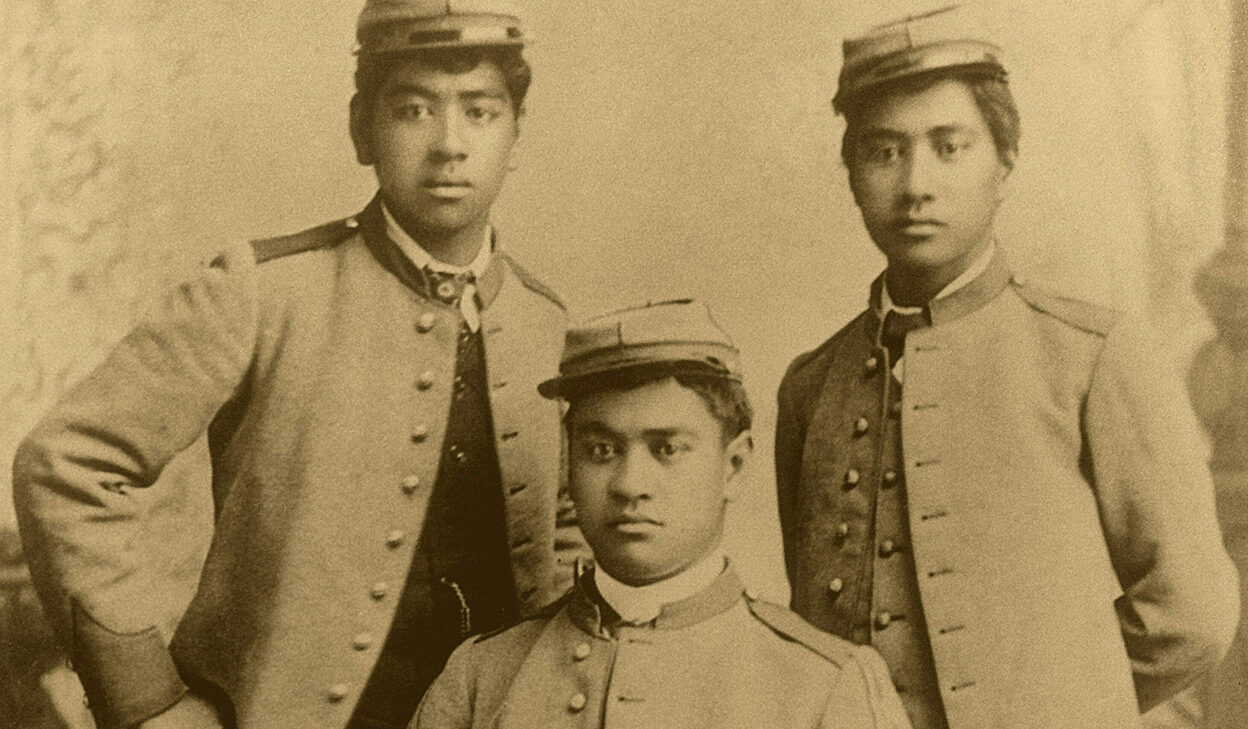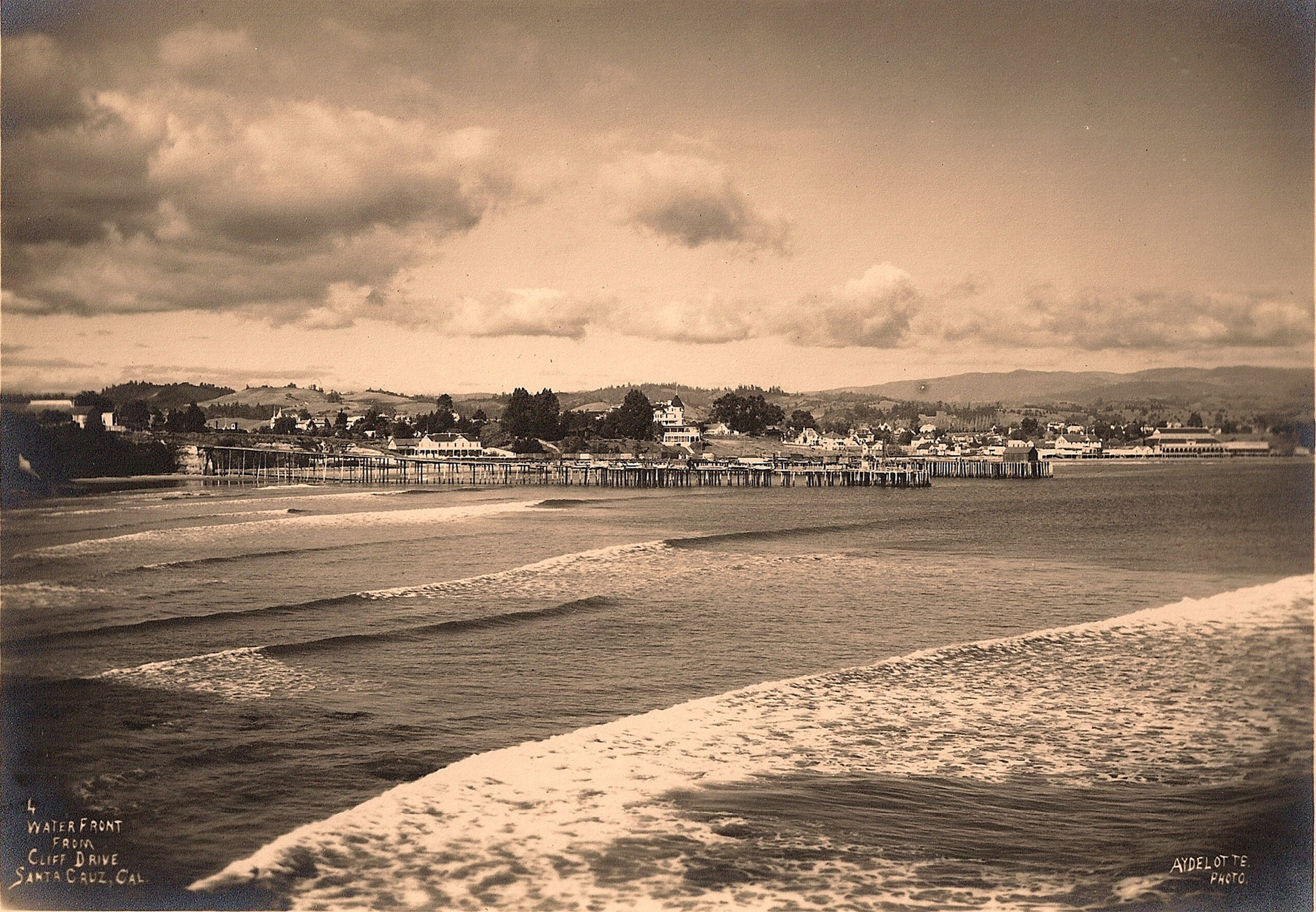FEATURES |
By Charlotte West
This week, Voices newsletter editor Charlotte West talks to Ginger Shulick Porcella, executive director of the Santa Cruz Museum of Art & History, about the “Princes of Surf” exhibition, currently on display at MAH through the beginning of January 2026. The project began with a tiny pop-up display a decade ago that became the museum’s most popular exhibit ever. Recognizing the overwhelming public interest, over the next ten years the museum has expanded that initial small exhibit into a comprehensive exploration of surfing’s rich cultural history. The current exhibition reveals how three Hawaiian princes — David Kawānanakoa, Jonah Kūhiō Kalanianaʻole, and Edward Keliʻiahonui — brought surfing to Santa Cruz, highlighting the sport’s Indigenous roots and local history. In this Q&A, Shulick Porcella offers a behind-the-scenes look at how this hidden chapter of history put Santa Cruz on the surfing map.
This interview has been edited lightly for length and clarity.
Charlotte West: Tell me about the origins of this exhibition.
Ginger Shulick Porcella: About 10 years ago, we did a smaller exhibition introducing the story of the princes of surf in our history gallery. It was just a tiny pop-up, but it was the most popular exhibition we’d ever done. So we thought, this would be great to develop into a larger exhibition on the history of surfing in Santa Cruz from the 1880s till today.
CW: Can you tell me more about how these princes came to Santa Cruz?
GSP: In the 1880s, they were going to school in San Mateo and spending their holidays in Santa Cruz with this woman, Antoinette Swan, who also was a surfer. It’s interesting that Hawaiians were sending their children to the mainland to be educated, and that’s how surfing came to the mainland U.S.
Enlarge

CW: How did the Museum develop the exhibition?
GSP: We worked closely with Dr. Geoffrey Dunn, who’s been researching this story for decades. He’s actually been working on a book about it, which we’re hoping will come out soon. We collaborated with Kim Stoner from the Surfing Museum here in Santa Cruz, and Bob Pearson, a well-known surfboard shaper who was crucial to our project.
CW: Can you tell me about the surfboards in the exhibition?
GSP: Bob Pearson went to the Bishop Museum (in Honolulu) and studied the original surfboards, then made exact replicas of the three surfboards the princes used. They’re 250-pound redwood surfboards — stunning works of art.
The day after the opening, they actually went out and surfed these replica boards at the mouth of the San Lorenzo River, where surfing first happened with the three Hawaiian princes. They were milled at a lumber company up the San Lorenzo River, which was the main industry in Santa Cruz at the time. These boards are massive — it takes four people to carry each one. It’s like trying to balance on a telephone pole.
Redwood remained the main medium for surfboards until the 1960s. People are coming to the exhibition just to see the artistry of the surfboards and how they’ve evolved through history.
CW: What surprised you most while putting this exhibition together?
GSP: It’s interesting how many local families have preserved this history. For example, we had a lecture about Dorothy Becker, the first professional female surfer in Santa Cruz in the 1920s and 30s, and her grandson came with historic photographs from their family photo albums.
Rose Marie Bryce, the first (woman) professional sponsored surfer, was in her 90s when she came to the opening. We had a whole section about her legacy in the exhibition, and it was really exciting that she was able to be there.
CW: What do you want people to take away from this exhibition?
GSP: I want people to understand that surfing isn’t just a white male sport — it’s for everyone and has always been for everyone.
We want people to feel proud of Santa Cruz culture and to think about how sports and art are interrelated. There’s a huge Black surfing community here in Santa Cruz, but it’s taken a long time for people to understand and tell that fuller story.
History doesn’t just stop; it’s constantly being created around us. Surfing history is still being made today, and we’ll be able to add to the story 10, 20 years from now.
Enlarge

CW: How did you gather all these historical materials?
GSP: We have significant historical archives at the museum. Many photographs came from Dr. Geoffrey Dunn’s research and from descendants of people involved in Santa Cruz surfing history. It’s interesting how many folks here have families that have been in Santa Cruz for generations, and they’ve kept these incredible historical photographs and artifacts.
CW: What’s next?
GSP: We are talking with another museum in California about potentially touring the exhibition next year. We believe there’s a lot of great content here that needs to be shared with the world.
Enlarge

If you go
Through Jan. 4, 2026: “Princes of Surf 2025: Heʻe Nalu Santa Cruz” at Santa Cruz Museum of Art & History spotlights how three Hawaiian princes introduced surfing to the U.S. mainland via Santa Cruz in 1885.
Have something to say about this story? Send us a letter.
